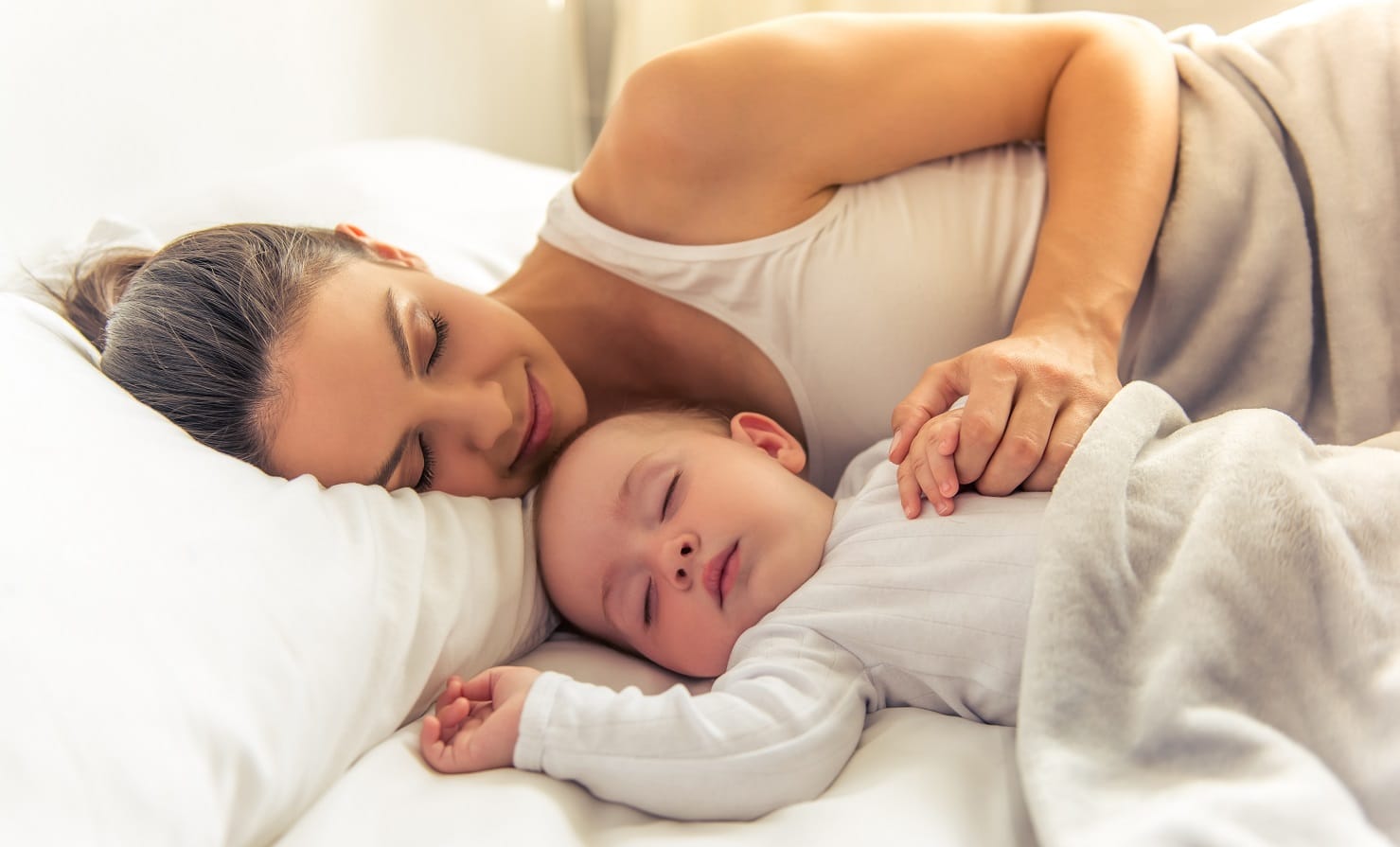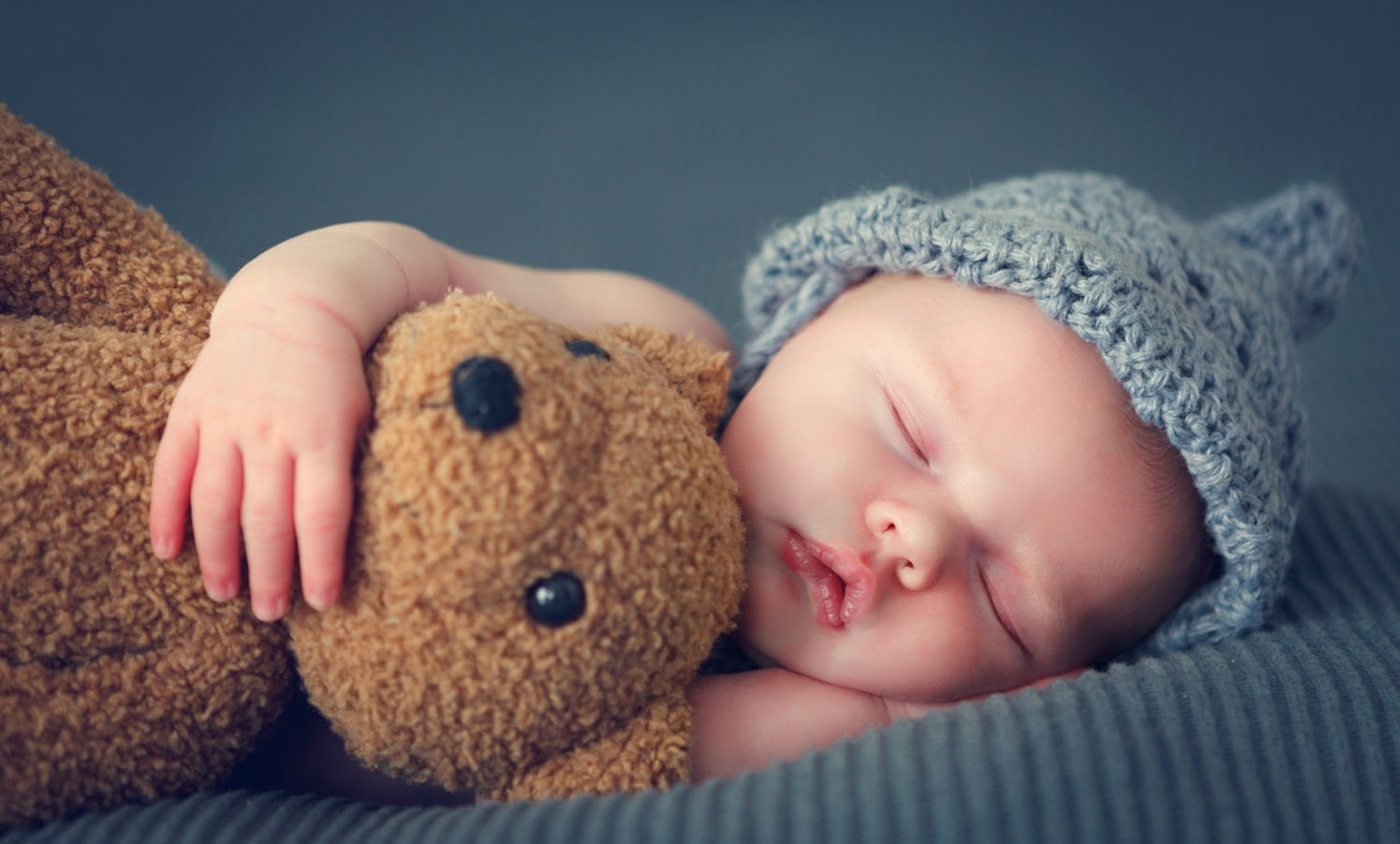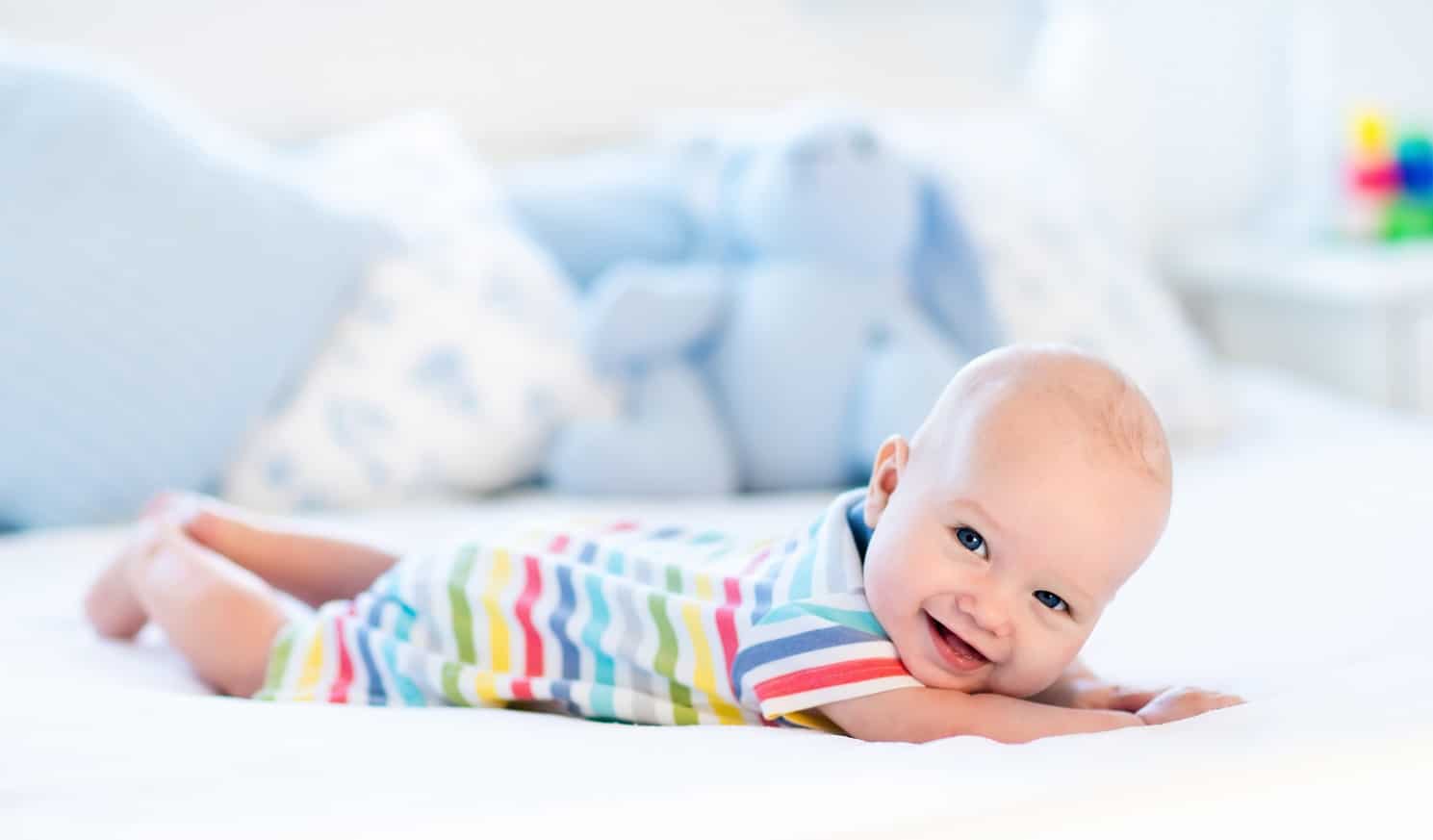Do you ever marvel at your baby’s laugh when they’re sleeping? Researchers believe that there are a few reasons why babies may be laughing in their sleep. Some common reasons include the release of gas from their stomachs and intestines after eating; experiencing dreams about pleasant experiences like being tickled or cuddled; and just because they’re happy.
Newborn baby smile often experiences short bursts of laughter while dreaming which is called hypnagogic or dreaming laughter. The brain activity that controls the muscles for infant smiling occurs during REM (rapid eye movement) sleep when dreams are most vivid.
It’s common for babies to laugh in their deeper sleep. It sounds like they’re having a party while they’re snoozing, but it’s just the way their little bodies are relaxing and releasing tension. Some say that this happens because of the brain signals being sent from the baby’s stomach to its mouth when it laughs or smiles in its sleep. In this article, you will get more information about the context and for that, you need to go through it at the end of this content.
In This Article
Why do babies Smile while Sleeping?
Why do babies laugh in their sleep? These kinds of questions might pop into our minds when we see a baby smiling while sleeping. Some parents find it cute when their baby smiles while sleeping, but some find it slightly disturbing. The reason why babies smile while sleeping is because they are in a state of deep relaxation which makes them feel contented and blissful.
Since their body does not need to exert much energy, the muscles relax making way for their expressions to form into this cute little smile. This happens among infants when they are in REM sleep or Dream mode. As with adults, these expressions become milder when they are in deep sleep. It is not necessary for you to feel alarmed or disturbed about these kinds of expressions.

Babies need to spend more time in deep sleep than during REM sleep or dream mode. They usually wake up after attending to all the needs their bodies demand. This may sometimes result in making them cry upon waking up. This is important for the parents to care for their child when they are in deep sleep. This way, your infant will always be happy and healthy throughout their childhood.
What is the REM Sleep cycle?
REM or Rapid Eye Movement sleep cycle is a neuroscientific name for the stage of sleep where your dreams can be found. It is also known as “active sleep” because it accounts for about 25% of our sleeping hours. Rapid Eye Movement sleep is a stage in the normal sleep cycle that occurs between stages of deep sleep.
During this stage of activity, vital signs such as muscle tone and eye movements are at their maximum levels. However, sometimes you can see your baby smiling, laughing, or even giggling while sleeping. These expressions are common among infants especially when they are in the REM stage of sleep.
Smiling can also happen while your baby is awake which is due to the fact that they are learning how to interact through facial expressions. Smiles from babies can be a form of communication before they can learn language skills. Furthermore, smiling is also a way for babies to express their emotions which are certainly pure and genuine.
Stages of REM Sleep cycle:
As mentioned earlier, the REM stage is one of the most important stages in your baby’s sleep. It is also proven that all people who are asleep go through this kind of cycle throughout their sleep time. Sometimes due to some disturbances in their sleep like an alarm or a sudden noise, they can experience ‘fragmented REM sleep’ where the person will not be able to go through all the stages of a complete cycle.
NON-REM SLEEP CYCLE (Stage 1): During this phase, babies will experience sudden jerks of the body which is nothing but their brain waves becoming active.
NON-REM SLEEP PHASE (Stage 2): At this stage of Non-Rem, your baby’s eyes move slowly and muscle activity slows down. Your baby still has an ability to hear you even when asleep. This is what we call asleep talking.
NON-REM SLEEP PHASE (Stage 3): This is the stage where your baby’s body learns to rest deeply. The brain waves are slower, breathing becomes regular and the body temperature decreases. It is possible for babies to have nightmares during this phase. Nightmares are characterized by intense emotions, which would explain why these dreams often cause babies to smile or laugh.
Different Types of Babies Smile?
Babies smile when they dream because the stimulation of the limbic system creates an emotional response, thus triggering a smile. In the first few weeks after birth, a baby often smiles when they are relaxed or drowsy. As babies grow older and become more aware of their environment, smiling becomes a means of communication.
Babies smile in response to your happy voice or face. They also smile as a way to express emotions such as pleasure, contentment, and affection. The experiences babies have in their dreams might elicit an emotional response but it is more likely to be fear rather than laughter. Mostly it happens when you tickle your baby while sleeping. Given below are some types of newborn baby smiles in their dreams.

1 Reactive Smile:
A reactive smile is a spontaneous response to an event such as your happy voice or face. In the beginning, it might be difficult for you to tell if your baby is smiling in response to you or just sleeping and this will help you bond with them.
However, once babies become more aware of their environment, their smiles become part of communication and they start smiling when you enter the room, when they hear your voice and when they look at things in their surroundings.
2 Reflexive Smile:
This is a neurologically driven behavior without emotions. It is the earliest form of smiling that happens even before birth. Reflexive smiles happen when babies are in REM or dream mode and their muscles relax, which becomes a natural response for them. Your baby might have had reflexive smiles even when they were in utero.
A reflexive smile is an automatic response by babies when their lips turn up and their eyes open widely. It does not happen because of any specific stimuli so it can be hard to tell if your baby is smiling or experiencing gas. Reflexive smiles can be broadly classified into three types:
- Spontaneous Smiles: These occur when babies are relaxed and their eyes open widely.2. Reflex Smile: These are automatic responses, but do not have any specific stimuli that trigger them. The muscles surrounding their mouth contract and produce a natural reflex smile.3. Social Smiles: These are the most common active sleep babies laugh to use to interact with people around them. They are done with the purpose of initiating interaction rather than being a response to any specific stimuli.
3 Social Smile
Babies also smile as a way to communicate their pleasure, contentment, and affection. Social smiles are more broad expressions of happiness. As babies become more aware of their surroundings, they also become more social and like to interact with people around them.
A smile is a great way for babies to initiate interaction with others. It is also part of showing interest in exploring their surroundings. Smiling becomes more purposeful as babies grow up. It is one way they show their emotions and connect with people around them to form relationships.
4 Gas Smile
Though a gas smile is not the same as other types of smiles such as spontaneous or intentional ones. Passing Gas smiles are involuntary spasms of muscles around the eyes caused by excess gasses in the stomach due to feeding or swallowing air while drinking from a bottle.
Gas Smiles is an involuntary contraction of muscles around the eyes caused by excess stomach gas, often after feeding. Sometimes farting brings relief to your baby. The expression looks like a smile because it involves the muscles around the eyes.
Unlike other types of smiles, your baby will not necessarily have control over this natural reflex smile. It will be most noticeable when they are relaxed or drowsy, but it might also happen after feeding, during hiccups, or burping.
5 Responsive Smile
Responsive smiles are a way for your baby to communicate their emotions of pleasure, affection, or happiness through laughing or smiling. When babies become more aware of their surroundings, they start using all kinds of facial expressions to express their emotions and communicate.
This usually happens between the sixth and eighth months of age. Watch your baby closely and try to respond with a smile or laugh. This will help them know what you like and they will start doing things that make you laugh or smile more often.

FAQ’s
How to maintain a baby’s sleep cycle?
For maintaining baby’s rem sleep cycle, Coordinate routines for bedtime and naptime.
(I) Put her or him down gently—no sudden movements or loud noises.
(ii) Create a soothing bedtime routine that focuses on the senses, such as reading together, stroking skin with soft cloths, holding close while swaying back and forth, etc.
These sorts of activities give the person/child cues that it’s time for sleep without breaking their concentration by distracting them with conversation or lights that could be sources of sensory stimulation instead of relaxation
When babies laugh in their sleep is healthy?
Yes, the baby is completely unaware of the outside world but is deeply involved in their internal world. They are safe inside the mother’s womb with plenty to eat and drink, they are warm, snugly wrapped up inside a comforting place where all their needs are being met. This is probably as good as it gets for any living thing.
Breathing slowly while smile in dreams is good for the baby?
Yes, breathing slowly while smiling in dreams is good for the baby.
This may be caused by slow pulse rates which are linked to emotional calmness and general well-being – all of which are important for pregnant mothers. One theory is that it encourages the production of beneficial hormones, such as oxytocin (the so-called “love hormone”) and prolactin, that promote maternal feeling or bonding with their unborn child. The act also boosts the immune system.
The Conclusion:
Therefore, it might not be that babies are naturally funny or cheerful, but rather they laugh because it’s a way for them to release energy. This is especially important around naps and bedtime. This can happen if the baby has dreamt about something pleasant or funny, like eating ice cream or playing with their favorite stuffed animal.
If you have ever watched a baby in deep sleep, then you may have noticed that they briefly wake up and break out into a short fit of giggles. You may wonder why this is since no one can hear them laughing. It is not known for certain why babies laugh in their sleep, but some things may contribute to this phenomenon.
So, for more information regarding it just stay connected with us and share your thoughts through a comment below, respectively.











